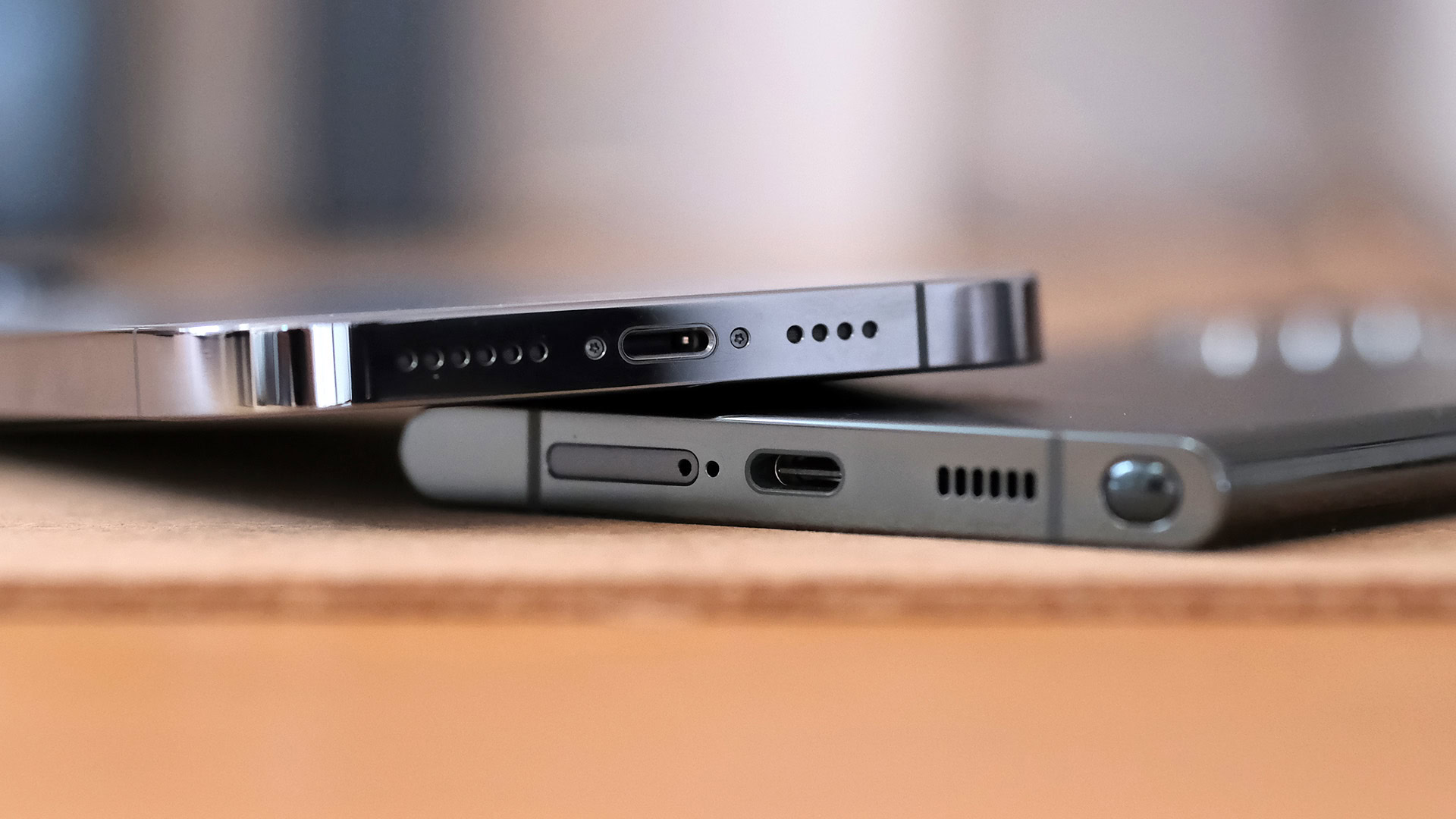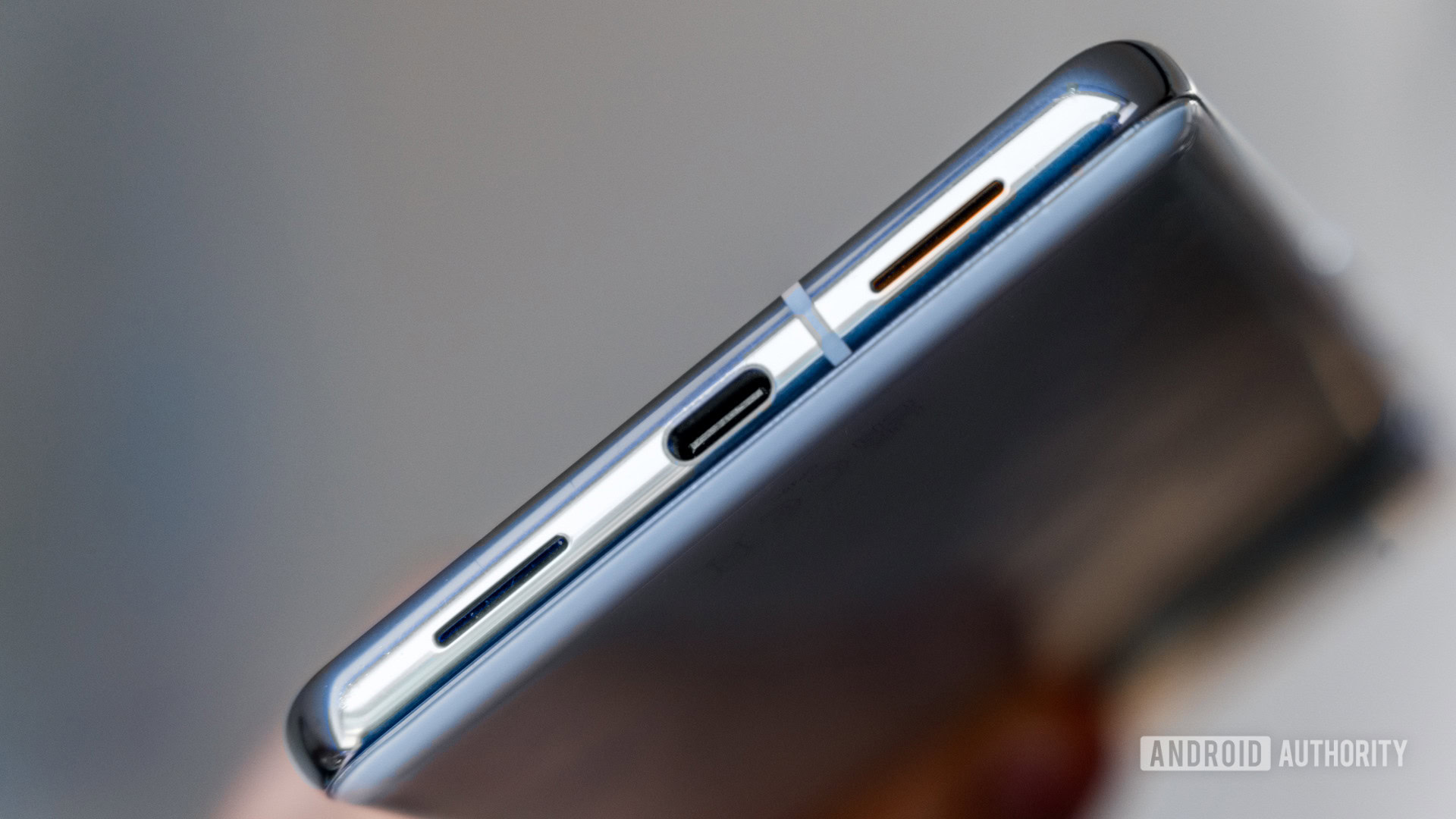Affiliate links on Android Authority may earn us a commission. Learn more.
iPhone users, welcome to the beautiful USB-C shit show
Welcome to the USB-C family, iPhone users. Better late than never, I suppose, but now that you’re here, the last piece in the one-port-for-everything puzzle finally slots into place.
Buying an iPhone 15 now means you can charge your phone, iPad, MacBook, Nintendo Switch, and, of course, any other Android phone in the household with a single USB-C connector. No more digging out the Lightning cable just for your phone or instant regret when asking your Android pal to share their battery pack.

Better yet, picking the correct charger with sufficient power means using just a single plug for everything supporting USB Power Delivery, including all the products listed above. Fortunately, the latest iPhone still plays nicely with chargers for previous models that provide at least 20W of power. You aren’t short of a choice when looking for the best iPhone 15 chargers.
One cable for everything is a convenience you can't go back on.
Not forgetting that USB-C opens the door to much more than data and power. It’s not just about reversible connectivity; USB-C can be used to plug in external displays, play audio, and even act as an ethernet connection. Those embedded deeper into Apple’s ecosystem will already be enjoying some of these benefits on the latest iPad and MacBooks, and the iPhone 15 series boasts DisplayPort over USB-C for the first time.
It’s a convenience we’ve long touted, and once you’re fully on board with USB-C, there’s no going back to the old days of multiple connectors. However, if you’ve checked in on the state of USB-C, you’ll be aware that the physical simplicity is let down by an untangled web of opaque specifications supported over the connector. Unfortunately, Apple has already fallen into the USB-C trap, and the latest iPhone 15 series further contributes to the mess.
The iPhone 15 makes USB-C even more confusing

While all models in the iPhone 15 series support USB-C, there are some key discrepancies that consumers need to be aware of.
Apple’s iPhone 15 Pro and 15 Pro Max sport nifty data transfer speeds of up to 10Gbps over USB-C. However, Apple incorrectly labels this as USB 3; 10gbps capabilities now fall under the revamped USB 3.2 Gen 2×1 moniker you’ll find on other products. Confusing? Absolutely, but that’s just the start of the issue.
But real consumer confusion will come from the fact that the standard iPhone 15 and 15 Plus only support the old USB 2.0 protocol. That version offers data speeds of just 480Mbps — 20x slower than the Pro models. Despite equipping all the phones with USB-C, the lower-cost iPhone 15 variants transfer video files and other data much more slowly than the Pros.
| iPhone 15 | iPhone 15 Plus | iPhone 15 Pro | iPhone 15 Pro Max | |
|---|---|---|---|---|
Connector | iPhone 15 USB-C | iPhone 15 Plus USB-C | iPhone 15 Pro USB-C | iPhone 15 Pro Max USB-C |
Data speed | iPhone 15 USB 2.0 480Mbps | iPhone 15 Plus USB 2.0 480Mbps | iPhone 15 Pro USB 3.1 Gen 2x1 10Gbps | iPhone 15 Pro Max USB 3.1 Gen 2x1 10Gbps |
Charging Power | iPhone 15 20W | iPhone 15 Plus 20W | iPhone 15 Pro 20W | iPhone 15 Pro Max 20W |
If that wasn’t confusing enough, Apple ships a USB 2.0 compatible USB-C to USB-C cable in the box of all the latest iPhones. That’s right, the Pro and Pro Max might be capable of 10Gbps, but not if you use the cable Apple supplies. Instead, you’ll have to bring your own compatible cable or buy a suitably rated one from Apple. However, the company fails to make USB specifications clear on its website, and many of its cables are just USB 2.0 rated. Apple had better brace for a consumer backlash because it’s royally messed this up.
With different transfer speeds and incompatible cables, the inconsistent iPhone 15 setup further contributes to the mess that is USB-C.
But data is just the tip of the iceberg; consumers will again need to dig out specific cables to ensure cross-compatibility with all their Apple products. For instance, you’ll need a DisplayPort capable cable to mirror the latest iPhone’s display, and a USB4- or Thunderbolt-compliant cable is required to access blazing-fast USB4 speeds (40Gbps) on an M1 Mac. Similarly, the iPhone 15 charges at low power levels over virtually any USB-C cable, but you’ll need a 5A-rated version to charge a 100W MacBook Pro.
Fortunately, Apple didn’t throw a further spanner in the works with its rumored MFi (Made for iPhone/iPad) cables certified by Apple. However, its overpriced branded cables are there to capitalize on consumer confusion about exactly what they’ll need to make the most of their latest purchase. To help, check out our guide to the best USB-C cables.
Apple missed the opportunity to simplify the USB-C experience for its customers.
Overall, moving to the convenience of USB-C is still a win for iPhone customers and the broader ecosystem, which now only have to target one connector type for accessories and the like (though MagSafe throws a bit of a spanner in that plan already). However, Apple missed the opportunity to simplify the USB-C experience for its customers, having fallen into the trap of opaque port and cable requirements. This messy launch means we’re bound to see growing pains as iPhone owners transition over to the pros and cons of USB-C.